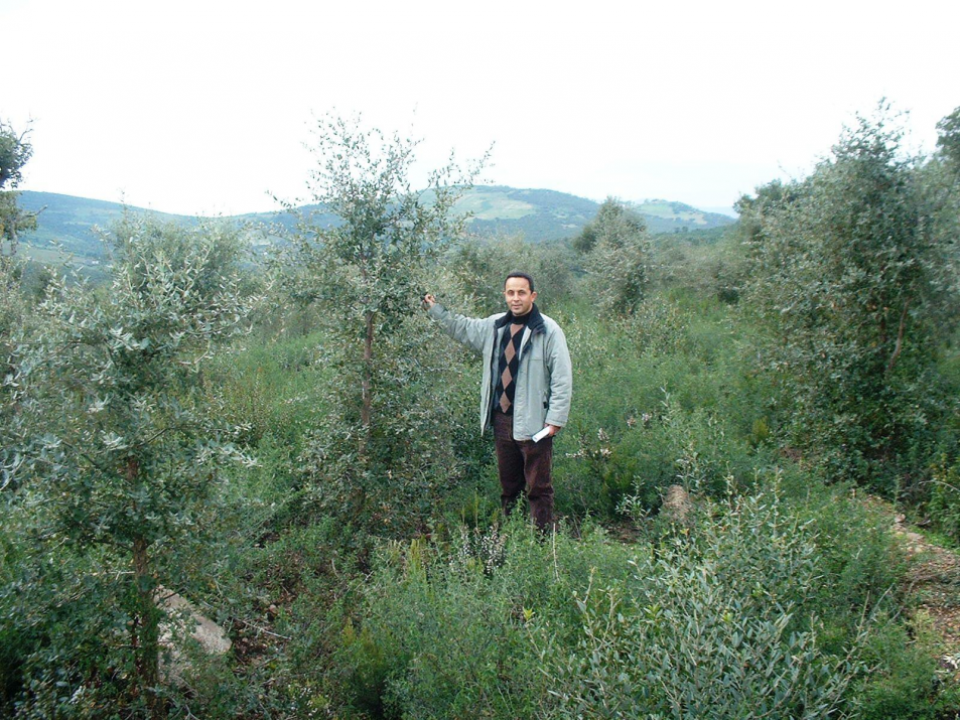
In Tunisia, the cork oak is facing various difficulties namely: severe ecological conditions, very heterogeneous stands with variable density, and strong pressure on the forest. Reforestation has become an essential alternative to regenerate old cork oak forests and to support natural regeneration. Selecting adequate plant material with good genetic quality is important to ensure high adaptation to environmental hazards. In this context, the main objective is to explore and evaluate the genetic variability among different stands to select and conserve the best genetic material.
A network of plantations with comparative provenance was set up in the 1990s, bringing together 7 Mediterranean countries; This action is implemented to study the genetic material of the species in the countries of origin, to improve the almost absent natural regeneration and to raise the interest for cork savagely competed by plastic substitutes. The provenances tested in Tunisia are unevenly distributed between the countries involved in the project. A plantation was carried out in December 1997 on an experimental plot of "Tebaba" located near Nefza in the northwest of Tunisia.
The results of the statistical analysis highlighted the existence of high variability between provenances, at the age of 7 years. Overall, survival is high. It is 85% on average, oscillating between 72 and 94% respectively for Boussafi (Morocco) and Santiago de Cacém (Portugal). The survival of Tunisian provenances amounts to 89% for the Mekna provenance and 78% for the Fernana provenance. The average height of provenances is 59 cm. It varies from 40 cm (Sardaigna Cagliari from Italy) to 70 cm (Santiago de Cacém from Portugal). Out of the 26 provenances tested, Mekna and Fernana rank 5th and 21st. with respectively 61 and 49 cm of average height.
It is useful to recall that in the particular conditions of the Tunisian forest, strongly weakened by different hazards (climatic, anthropic...), the question of establishing a sustainable and perennial system, in anticipation of global changes, is favored compared to the concern to ensure a maximum of production.
For this reason, in the choice of provenances, the criterion of adaptation to the various hazards of the environment, including tolerance to parasitic attacks, must be considered as a priority. Besides, there is therefore an urgent need to collaborate with forest technicians to share main results concerning the choice of provenances for each type of environment.
Experimental plantations of provenances can be exploited for two purposes: ex-situ genetic conservation and selection of provenances. The use of the most efficient provenances in reforestation projects is likely to significantly improve the success and productivity of cork oak in planting and ensure better regeneration of the species.
Because of the lack of resources (human and material), the trials are neglected and are in a state of abandonment. Because of their importance and their experimental value, they deserve to be well maintained and monitored regularly in order to obtain a better profit.
Despite the interest in the results obtained, there has been no transfer of the results in practice. There is therefore a common effort to be made by researchers in collaboration with forest technicians to diffuse research results concerning the choice of provenances for each type of environment. The provenances selected should be suitable for the restoration of degraded forests and the creation of new cork oak afforestation in the Tunisian context.
Mohamed Larbi Khouja, khouja.larbi15@gmail.com , http://www.inrgref.agrinet.tn/
Abdelhamid Khaldi, khalditn@yahoo.fr , http://www.inrgref.agrinet.tn/
Mohamed Lahbib Ben jamaa, benjamaaml@gmail.com , http://www.inrgref.agrinet.tn/
Lamia Hamrouni, hamrounilam@yahoo.fr, http://www.inrgref.agrinet.tn/
Further information
Khouja M. L., Khaldi A., Ben Jemaa, M. L., Toumi L. et Lumaret R. ; 2000 : Conservation and improvment of cork oak forests in Tunisia : Acquired of researches and technical applications, Congrès mondial sur le chêne liège tenu à Lisbonne (Portugal) du 19 au 21 juillet 2000, 11p.
Khouja M. L., 2001 -Amélioration génétique : inventaire et bilan des recherches entreprises en Tunisie. Annales de l'INRGREF (Numéro spécial). p. 1 -44.
Souayah N., Khouja M. L. et Nsibi R. 2001 -Etude de la variabilité morphométrique chez le chêne liège aux stades juvéniles. Journées Scientifiques de l'INRGREF, Déc. 2001.
Nsibi R., Souayah N, Khouja ML, Rejeb MN et Bouzid S., 2003 -Le drageonnement du chêne liège et sa relation avec l'âge des souches-mères. Journées scientifiques de l'INRGREF Nabeul, décembre 2003.
Khouja ML, Khaldi A., & Sellemi, H., 2005. Variabilité adaptative du chêne liège en Tunisie. IOBC/WPRS Bull. 28, (8) : 231-236.
Khouja ML, Ben Jamaa ML, Franceschini A, Khaldi A, Sellemi H et Hamrouni L., 2007 - Observations sur le dépérissement des provenances de chêne liège dans le site expérimental de Tebaba au Nord-Ouest de la Tunisie. 5ème meeting « Protection intégrée des forêts de Quercus sp.Tlemcen – Algérie du 22 au 25 octobre 2007.
Ghandour M., Khouja M.L., Toumi L. et Triki S., 2007 – Morphological evaluation of cork oak (Quercus suber) : Mediterranean provenance variability in Tunisia. Ann. For. Sci., 64, 549-555.
Khouja M.L., Ben Jamâa M.L., Franceschini A., Khaldi A., Selmi H. & Hamrouni L., 2008. Observations sur le dépérissement des provenances de chêne liège dans le site expérimental de Tebaba au Nord-Ouest de la Tunisie. IOBC Bulletin.
Khouja ML, Hamrouni L., Toumi L., Selmi H., Khaldi A., 2008 – Genetic variation in growth and form characteristics of Quercus suber in Tunisia. Chapitre d’ouvrage “ SUBERWOOD : New challenges for integration of cork oak forests and products” 20,21 and 22 of October 2005, Huelva, Spain.
Abdelhamid Khaldi
FAIR 202 project team
